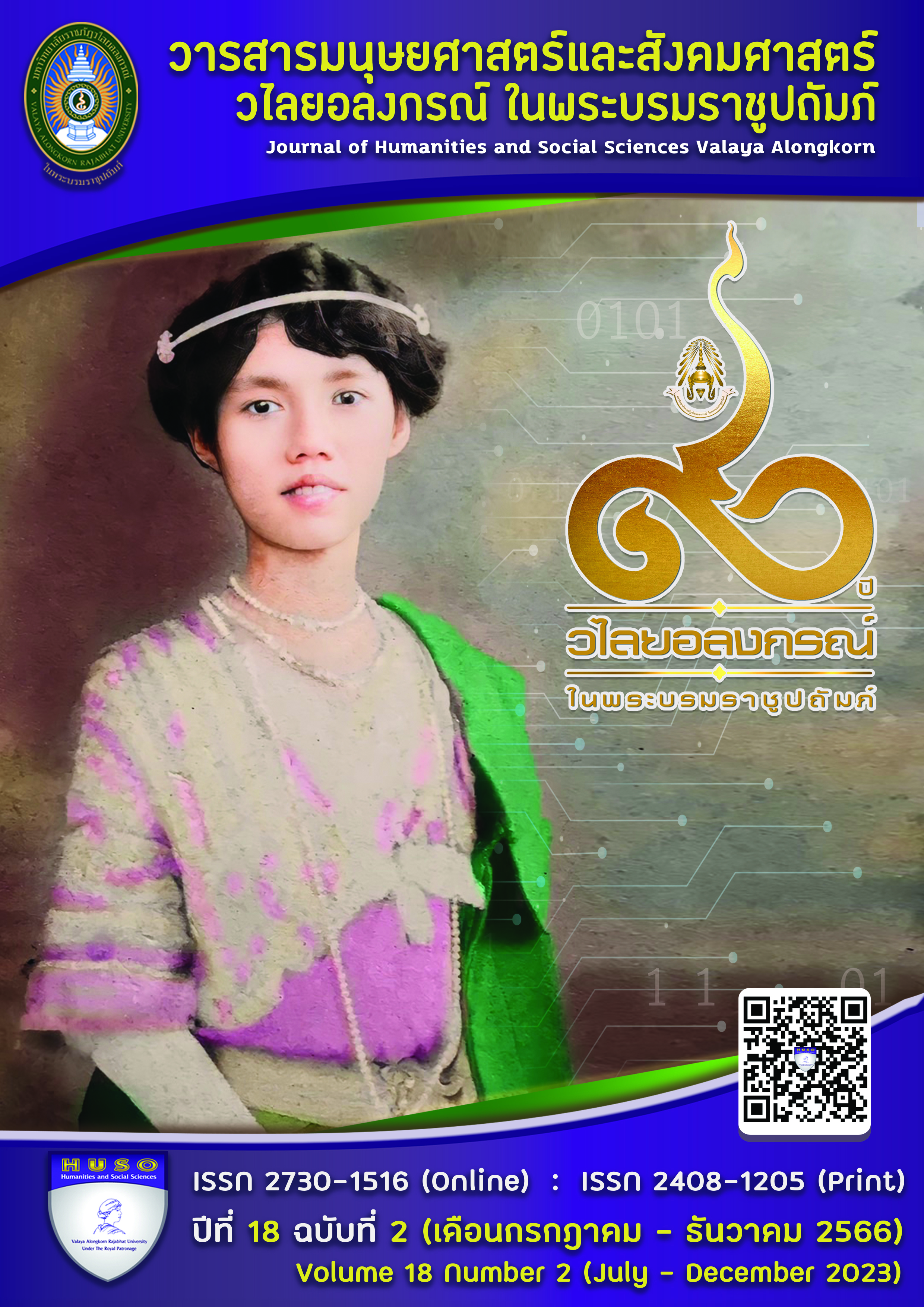FACTORS AFFECTING THE DEMAND FOR THE USE OF DIGITAL EDUCATIONAL MEDIA FOR STUDENTS WITH LEARNING DISABILITIES
Main Article Content
Abstract
The goals of this study are to 1) analyze the factors that influence demand for digital media for learning among students with learning disabilities, and 2) investigate the link between factors that may have a significant impact on demand for digital educational media for learning disabilities students. The samples were divided into two groups: 38 teachers and 127 primary school children with learning difficulties within the second semester year 2022. This study selected the public schools in Primary Educational Service Area Pathumthani Office 2 that provide inclusive education. The study instrument consists of statistical questionnaires used for analysis, which include percentage, mean, standard deviation, and multiple regression analysis using the Stepwise approach.
The findings of the study revealed that 1) variables influencing the demand for digital educational media can be described into five characteristics based on the study and investigation of theories, research papers, and related documents: 1.1) Presentation manner
1.2) User interface design, 1.3) Feedback, 1.4) Learning environment, and 1.5) suitable for learning disabilities. 2) Based on the examination of each element's interaction, the group of teachers discovered the suitability factor for learning disability conditions learn and learning environment. There is a link that influences the demand for digital educational media. According to the equation ŷ = 0.310 + 1.038 (Disability) - 0.117 (Environment), and the group of students discovered that the elements of suitability for learning disability conditions and the feedback side there is a relationship that influences the demand for digital media for learning, which is represented by the equation ŷ = 1.828 + 0.238 (Disability) + 0.164 (Feedback).
Article Details

This work is licensed under a Creative Commons Attribution-NonCommercial-NoDerivatives 4.0 International License.
ลิขสิทธิ์บทความวิจัยที่ได้รับการตีพิมพ์เผยแพร่ในวารสารมนุษยศาสตร์และสังคมศาสตร์ วไลยอลงกรณ์ ในพระบรมราชูปถัมภ์ ถือเป็นกรรมสิทธิ์ของคณะมนุษยศาสตร์และสังคมศาสตร์ มหาวิทยาลัยราชภัฏวไลยอลงกรณ์ ในพระบรมราชูปถัมภ์ ห้ามนำข้อความทั้งหมดหรือบางส่วนไปพิมพ์ซ้ำ เว้นแต่จะได้รับอนุญาตจากมหาวิทยาลัยเป็นลายลักษณ์อักษร
ความรับผิดชอบ เนื้อหาต้นฉบับที่ปรากฏในวารสารมนุษยศาสตร์และสังคมศาสตร์ วไลยอลงกรณ์ ในพระบรมราชูปถัมภ์ เป็นความรับผิดชอบของผู้นิพนธ์บทความหรือผู้เขียนเอง ทั้งนี้ไม่รวมความผิดพลาดอันเกิดจากเทคนิคการพิมพ์
References
กระทรวงศึกษาธิการ. (2545). พระราชบัญญัติการศึกษาแห่งชาติ พ.ศ.2542 และที่แก้ไขเพิ่มเติม (ฉบับที่ 2)
พ.ศ. 2545. โรงพิมพ์คุรุสภา ลาดพร้าว.
กัลยา วานิชย์บัญชา. (2559). สถิติสำหรับงานวิจัย พิมพ์ครั้งที่ 10. หจก.สามลดา.
ดารณี อุทัยรัตนกิจ และคณะ. (2559). แบบคัดกรองนักเรียนที่มีภาวะสมาธิสั้น บกพร่องทางการเรียนรู้
และออทิซึม. กรุงเทพมหานคร : มหาวิทยาลัยเกษตรศาสตร์ คณะศึกษาศาสตร์ ศูนย์ศึกษา
และพัฒนาการจัดการศึกษาพิเศษ "คุณพุ่ม".
บุญชม ศรีสะอาด. (2556). การวิจัยเบื้องต้น พิมพ์ครั้งที่ 14. สุวีริยาสาส์นบุญธรรมกิจ.
สำนักบริหารงานการศึกษาพิเศษ. (2565). ระบบบริหารจัดการข้อมูลโรงเรียนเรียนรวม. http://specialbasic.specialset.bopp.go.th/specialbasic/report_guest.php?p=12df&&report=2t
American Psychiatric Association. (2001). DSM-IV. Washington DC: American Psychiatric Press.
Benmarrakchi, F., El Kafi, J., Elhore, A., & Haie, S.(2017). Exploring the use of the ICT in supporting
dyslexic students’ preferred learning styles: A preliminary evaluation. Education and
Information Technologies, 22, 2939-2957.
Cano, S. R., Alonso, P. S., Benito, V. D., & Villaverde, V. A. (2021). Evaluation of motivational
learning strategies for children with dyslexia: A FORDYSVAR Proposal for Education and
Sustainable Innovation. Sustainability, 13(5), 2666.
Cataudella, S., Carta, S., Mascia, M. L., Masala, C., Petretto, D. R., & Penna, M. P. (2021).
Psychological aspects of students with learning disabilities in e-environments: A mini
review and future research directions. Frontiers in Psychology, 11, 611818.
Gagne, R. M. (1997). Mastery learning and instructional design originally published in 1988, PIQ
1. Performance Improvement Quarterly, 10(1), 8-19.
Luís, C., & Marcelino, M. J. (2021). Accessibility and Usability in Learning Objects. Perspectives
and Trends in Education and Technology: Selected Papers from ICITED 2021, 83-92.
Mayer, R. E. (2009). Multimedia Learning. Second Edition ed.Cambridge University Press, 2009.
Osman, A., Wan Yahaya, W., & Che Ahmad, A. (2015). Educational multimedia app for
dyslexia literacy intervention: a preliminary evaluation. Social and Behavioral
Sciences 176 (2015) 405 – 411.
Pannim, P., Suwannatthachote, P., Manowan, P., & Numprasertchai, S. (2022). Improving Reading
Comprehension Skills Using Multimedia Storytelling with Mind Maps for Students with
Learning Disabilities in Thailand. International Journal of Emerging Technologies in
Learning, 17(8).
Vaughan, Tay. (2014). Multimedia: Making it Work. 8 th ed. McGraw Hill Technology Education.
Z-punkt GmbH. (2020). Z-punkt Megatrends Update. The Foresight Company, Germany.date.
The Foresight Company ,Germany.


